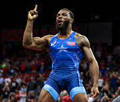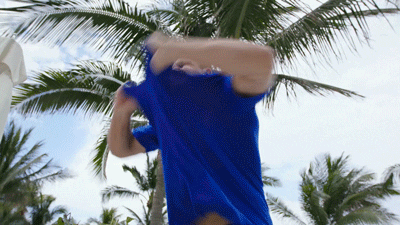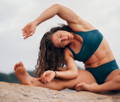How to Build Athletic Muscle
We first have to identify athletic muscle and what it looks like. Picture athletes like Rob Gronkowski, Jordan Burroughs, and Tia Clair Toomey. Their muscle bellies are longer, they are defined, have a great range of motion through different ranges, and they carry themselves with very specific qualities.

After identifying what we want, we have to talk about what we don’t want. Picture Thor or Eddie Hall at the peak of his career. Not to say Strongman athletes aren’t athletes, they are 100% athletes, but their body type and carry over to the broader spectrum of sport doesn’t work so great. The same goes for big, hulking bodybuilders like Ronnie Coleman and Jay Cutler. Their musculature would not really carry over to football, baseball, basketball, wrestling, and other open skill and closed skill environments.
We want the athletic musculature that carries over to multiple different sports and transfers very well.
To identify all of this, let’s start with the size of the muscle belly. We have to decide first if we need hypertrophy and whether the hypertrophy needs to be myofibrillar or sarcoplasmic. We want to look at the aspects of the size of the muscles, the ranges we want to look for, and how much strength and power is brought from the muscles.
We want athletes to be leaner. Which is related to their nutrition even more so than their training. The next aspect for athletes involves ranges of motion. We want athletes who can get through full ranges of motion. Think of Gronk coming out of his stance to post and block then releases and catches a ball in the flat. Gronk can produce a ton of force posting up and blocking as a tight end before shedding the defender and getting out in space to catch the ball and explode athletically up-field. Jordan Burroughs is another great example. He can be extremely explosive from a very deep position while engaging with very high levels of absolute strength through various ranges.

Both athletes have tremendous speed, range of motion, and maximal strength. That is what we are looking for! But how do we get there to build athletic muscle? Athletes who can coordinate quickly, display a large amount of absolute strength, and can also recruit their absolute rate at a very high rate to have a large amount of speed in a situation that is unloaded.
1. Recovery
Athletes who want to be the best they can be and potentially the best in the world have to start with how they recover. Athletes need to get 8 to 10 hours of sleep a night to make sure their hormones are behaving in the manner wanted. Athletes have to stretch, possibly doing yoga because lengthening is strengthening. And athletes with access need to go into the sauna. Finally, the most important aspect here is covering nutrition.
Athletes need to make sure they are getting at least 1 gram of protein per pound of body weight for their nutrition. Whey protein helps tremendously with this nutrition goal. Combining the whey protein with creatine will help increase athletic muscle, power output, ability to recover, put out more power and recruit more effectively.
2. Technical Coordination Movements
Watching Jordan Burroughs drop and hit his blast double involves technical coordination. All athletes use technical coordination movements for great transfer of training. The list of technical coordination movements is long: snatch, power snatch, high hang snatch, low hang snatch, clean, two-block clean, one block power clean, power clean, behind the neck jerk, and the list goes on and on. Technical coordination movements are rapid movements in which a large amount of weight can be used and the transfer of training carries over to various sports. Learning how to move heavy weight fast with a technical mindset increases athletic muscle. Do this along with the nutritional aspects involved in recovery, the gains in athletic muscle are great

3. Absolute Strength Work / Maximal Based Strength Work
Movements like back squats, single-leg squats, bench press, pull-ups, dumbbell incline bench, sled pull, and tons of other movements that are executed through full ranges of motion bring about a great transfer of training. In addition to their transfer of training, the absolute strength movements lead to more technical coordination while increasing the ceiling of technical coordination movements. Line this up with proper nutrition that brings in enough protein, gets enough sleep, and utilizing creatine will all help develop athletic strength.
Remember, when we talk about absolute strength it will increase athletes’ myofibrillar hypertrophy. An athlete like Tia who looks jacked does have some sarcoplasmic hypertrophy to her physique, but the fact that she lifts heavy weights consistently, her myofibrillar hypertrophy is higher so she can continue to put out more and more power output.

4. Plyometric Based Training
A cool part of social media is we can see a lot of movements athletes are doing. We can see athletes doing double leg bounds, single-leg bounds, hurdle hops, box jumps, and random chaos coordination movements used to increase athletic muscle. Plyometric series can enhance that.
We have coined the term chaos coordination. Think of an open skill sport like wrestling, football, soccer, or lacrosse. Athletes need plyometrics to train their bodies for specific skills to coordinate in chaotic situations. Think of Barry Sanders sprinting through a hole, seeing a linebacker and his body has to react before his mind can consciously tell him to cut, but Barry Sanders trained the technique, skills, and co-contractions so his body intuitively decelerates and cuts rapidly to execute chaos coordination at its peak of performance.
Plyometrics have a tremendous transfer of training to sport and help tremendously in developing athletic muscle.

5. Isolation Movements
It is okay to achieve sarcoplasmic hypertrophy and it is okay to use isolation movements to achieve sarcoplasmic hypertrophy because we might see a structural leak. We might also see a diminishment in structural integrity. By isolating those movements or joints, we can enhance the weak points in the chain.
Performing isolation movements around areas we struggle to get blood flow to is helpful for athletic muscle development. By doing higher rep movements, we can still strengthen the joint or area and increase the blood flow.
Recap
Use all five concepts to reach the goal of athletic muscle development. From there the training will transfer to many different sports, allowing athletes to be athletic as possible, coordinate as rapidly as possible, and do it all in various ranges of motion.
Thinking about how to program and prescribe movements? For a very basic layout: technical coordination movement for 5x3, absolute strength movement 5x5, plyometrics of 5 or 6 sets of 3 jumps at a time, and the isolation work for 3 to 4 sets of 17 reps through a full range of motion. And MAKE SURE to focus on nutrition to improve the overall ability to recover and that is exactly how to build athletic muscle!
DANE MILLER
Dane Miller is the owner and founder of Garage Strength Sports Performance. He works with a select handful of clients on building comprehensive programs for fitness and nutrition. Several times a year he leads a workshop for coaches, trainers, and fitness enthusiasts.


